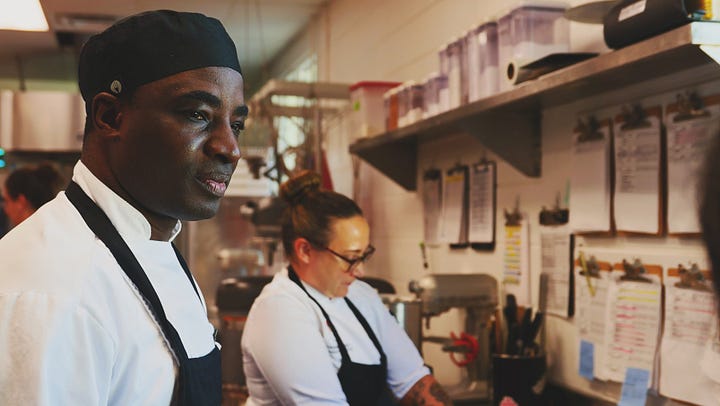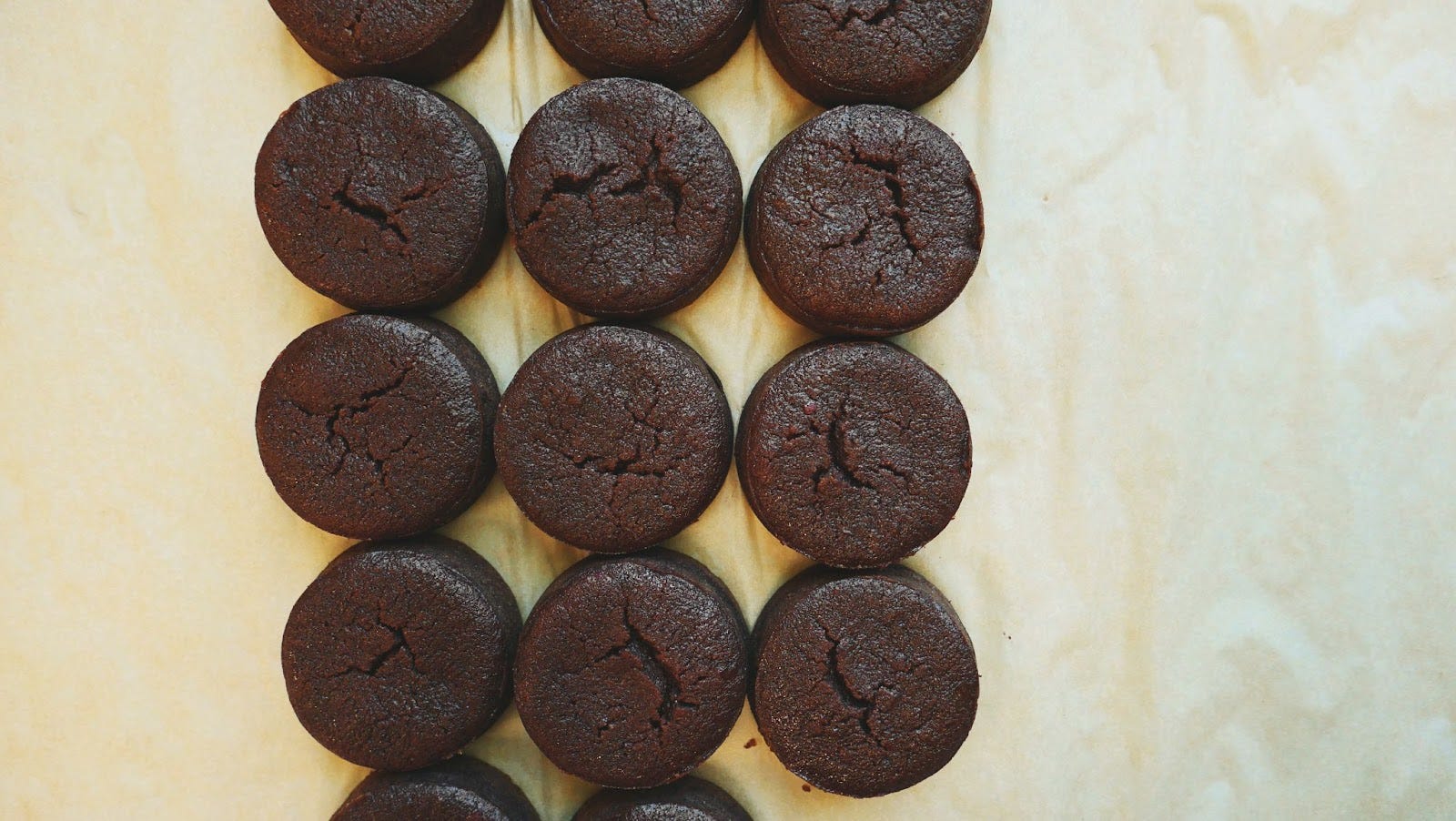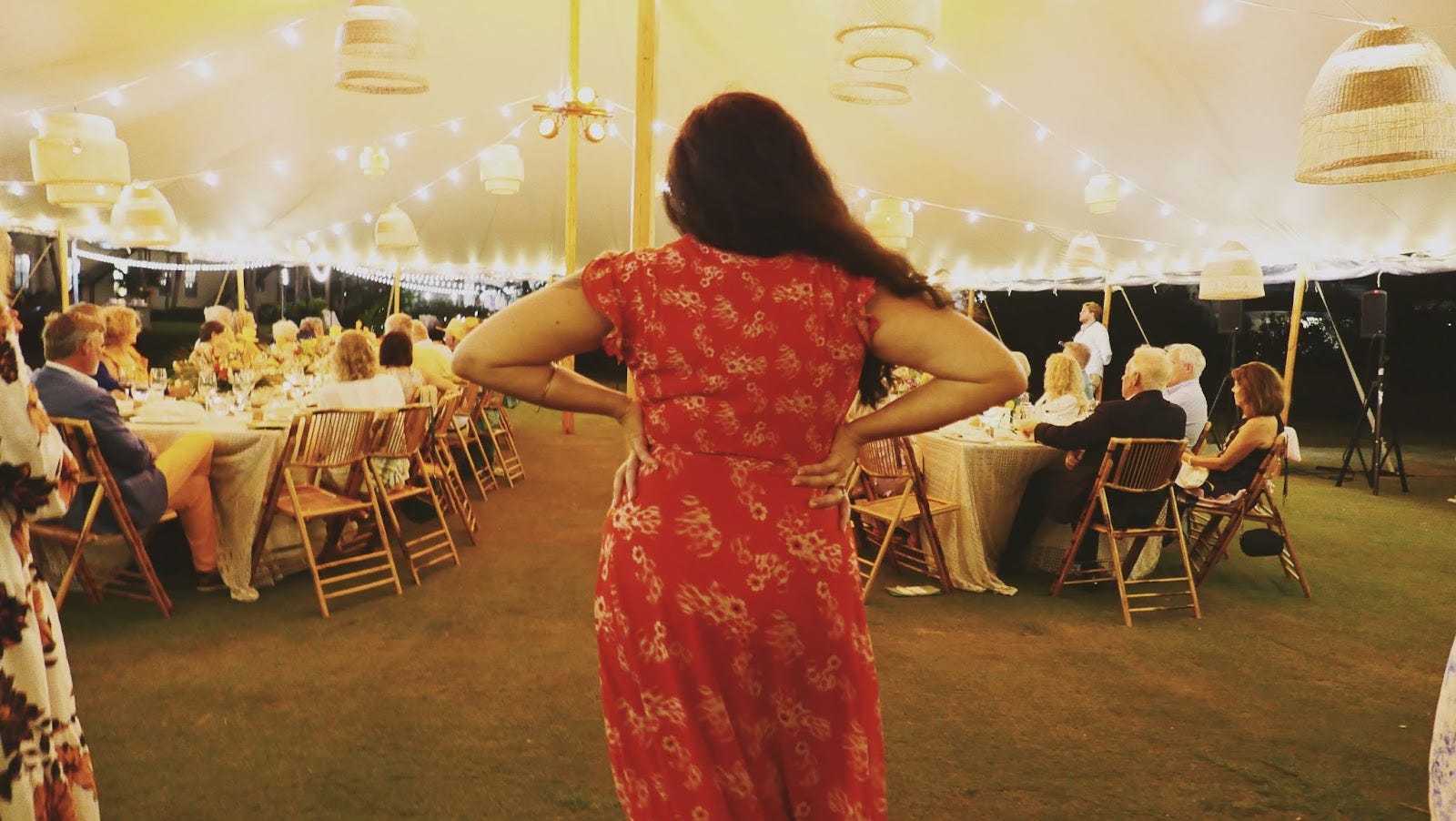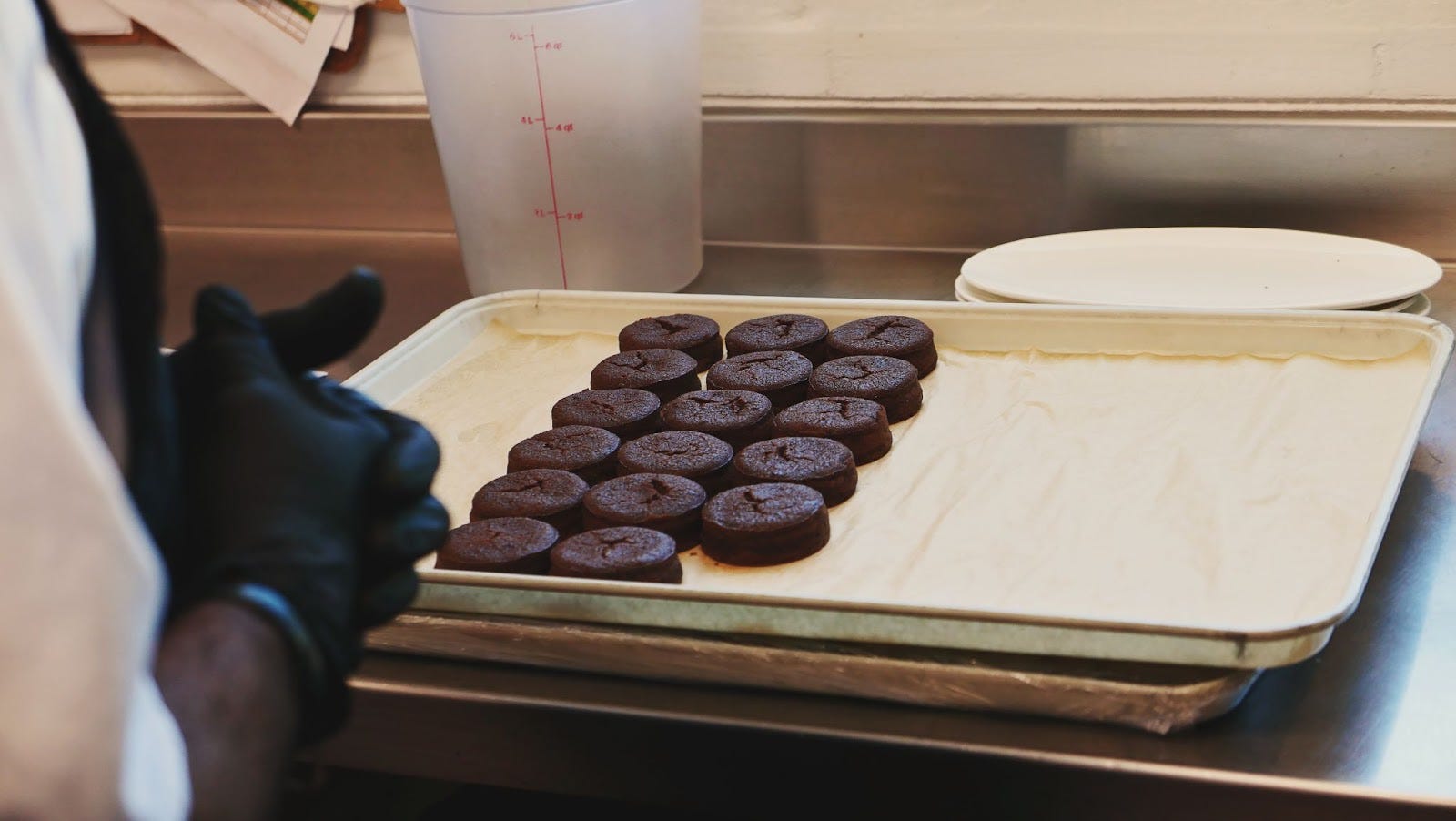Del escritorio de Von:
Thank you so much for subscribing to La Piña! I’m grateful for your interest and support, and am excited to share even more stories in 2024. This will be the last post for the year, and focuses on a Caribbean classic—black cake. It’s a nearly pitch black fruit cake made famous in Jamaica, where it marks the Christmas season. But like so many of my favorite dishes, this one is steeped in history, and demonstrates the profound creativity and resilience of tropical island communities. A version of the cake is among the recipes in Islas: A Celebration of Tropical Cooking (out in March but available for presale!), but here I share a special, original recipe from an unexpected source.
De corazón,
Von
“… food can be not only about recipes or ingredients, or even the act of making food, but how it’s a kind of language.” —Charmaine Wilkerson, author of Black Cake
Jamaican spice cake, rum pudding, plum pudding, Christmas cake, rum cake, great cake. These are just some of the terms used to describe what is commonly known as black cake. Dense, boozy, and pitch-dark, black cake is made by steeping dried fruit—typically a blend of raisins, dried plums, dried cherries, or prunes—in a combination of rum and fruit-based brandy or, at times, Manischewitz. The super sweet kosher wine is a popular substitute in Jamaica, Trinidad and Tobago, Guyana, Haiti, and Puerto Rico and across the region, owed in part to the region’s expansive diaspora across the U.S.
The name is as much a reference to the color of the cake as to the proud hands that have baked it throughout Caribbean households since the 18th century. With its use of alcohol-soaked fruit and consumption during Christmas time, black cake is believed to have emerged following British colonization and was inspired by recipes for other English classics including plum pudding and fruit cake. The dessert is so meaningful and ubiquitous to Caribbean culture, it features as the subject of a new, popular Hulu series, also called Black Cake, which is based on Charmaine Wilkerson’s brilliant book by the same name.
This importance is why I included Brigid Washington’s recipe for black cake in Islas. Her recipe is time-tested and requires precision and patience. Brigid prepares hers every Christmas in the manner similar to three matriarchs that came before her, a tradition she’s passing down to her own daughter, Noelle.
I’ve tasted several variations on this cake over the years, some quite moist like a British pudding, others denser like a flourless cake. The signature color and flavor of black cake comes from the browning, an ingredient made by caramelizing sugar until it’s a deep, dark brown. But don’t get this confused with premade, bottled “browning” you can find in stores or online, which is more often a dark savory starter used for gravies and stews. The flavor of this browning is similar to molasses, an ingredient often used as a substitute. And so when I was invited to be the guest chef for a Garden & Gun Magazine event—at the Gasparilla Inn at the beginning of the holiday season—I knew I had to include it in my all-Islas menu.
For starters, mini keshi yena (the Curaçaoan stuffed cheese dish dating back to Dutch colonization), then Fijian baby lamb chops atop crunchy Indonesian asinan fruit pickle. The mains included Aruban coconut rice, Puerto Rican grilled churrasco steak with Wasakaka chimichurri, and grilled red snapper filets marinated in a masalé curry from the Seychelles. And for dessert, black cake.
Now, there are only two dessert recipes in Islas, because–as I shared in my last post–I have a salt-meat tooth, not a sweet one. But in talking with the Gasparilla Inn’s Executive Chef Nick Marchesano, I learned that much of the inn’s kitchen and hospitality staff were of Jamaican descent. Instead of using my recipe, I invited the inn’s chefs to contribute their own, and pastry chef Calvin McFarlane was excited to take it on.
Calvin is from St. James Parish in Somerton, Jamaica. Growing up he learned to cook from his mother, Teahalorna, before training as a pastry chef in 1991 at the Half Moon Hotel in Montego Bay, and joining the Gasparilla Inn team earlier this year. As a classically-trained pastry chef, Calvin is more accustomed to preparing desserts such as canelés or macarons, but for my Islas-inspired meal he reached deep down to his roots and shared his grandmother, Mrs. E. Parnell’s, beloved black cake.
One of the challenges in developing this recipe is that it’s traditionally prepared at home, where many cooks start soaking dried fruit in rum months in advance. Most often, home cooks bake the cake in a 9-inch round pan. But for this event, we needed more than 60 individual cakes. I had faith that the Inn’s team would pull it off, and they exceeded my expectations. Calvin’s black cake—which he calls Jamaican spice cake—is lighter than most I’ve had, texturally somewhere between a flourless chocolate cake and a soufflé. And the flavors were more subtle and balanced than others I’ve tasted. When I took my first test bite, I couldn’t help but close my eyes and take in the dynamic flavor. When I opened them, I saw Calvin brimming with pride.


Suffice to say, the black cake was a hit with the guests. And for me, it was a privilege to share his name and story with them, to acknowledge the skill and history of a rarely celebrated cake. Calvin reminds me of so many talented island cooks I’ve met over the years. So often their recipes are practiced, not written down, and through their ingredients and techniques they reveal aspects of culture that often go untold—using (as Charmaine Wilkersen put it) the language of food.
Un Poquito Más
There are dozens, perhaps hundreds of recipes for black cake out there from aunties, abuelas, mamis, and neighbors. They’re each a little different, reflecting each cook’s special touch, as well as the place where it’s made and the ingredients available. And for many, making black cake is an artform, a time-honored tradition that should be practiced and cultivated. I recommend Shivi Ramoutar’s almond-infused version, as well as an earlier version of Islas contributor Brigid Washington cake. Marva Adams-Miller’s take (adapted by Ramin Ganeshram) is also gorgeous, as is Venetta William’s version with dates and figs, which are less commonly used, and NYT’s Julia Moskin’s adaptation from the Naparima Girls’ High School Cookbook. But perhaps the most surprising version I’ve found is from iconic poet Emily Dickinson, whose recipe demonstrates how this cake traveled from the Caribbean to New England in the mid 19th century.
Calvin’s Jamaican Spice Cake
Adapted by La Piña Editor, KC Hysmith
Makes 1 8-inch round cake
Total Time: 26 hours
Prep Time: at least 25 hours
6 tablespoons white rum, divided
½ cup sweet red wine (such as Manischewitz)
½ pound dried fruit of your choice (we use an even combo of raisins, currants, and cherries)
1 ¼ cups granulated sugar
6 tablespoons boiling water
½ cup (1 stick) unsalted butter, at room temperature
½ cup packed dark brown sugar
2 eggs, at room temperature
½ tablespoon vanilla extract
¾ cup all-purpose flour
1 teaspoon baking powder
½ teaspoon cinnamon
¼ teaspoon nutmeg (freshly grated, if possible)
¼ teaspoon kosher salt
In a large bowl, combine 2 tablespoons of the rum and all of the wine. Add the dried fruit and allow to soak for at least 24 hours and up to a week.
When you’re ready to bake, set the oven to 325°F then prepare the browning. In a large, heavy-bottomed pot set over medium high heat, add the granulated sugar and stir with a wooden spoon until the crystals have melted and look like thick simple syrup. Continue stirring until the sugar darkens. NOTE: It will probably smoke and it will bubble. When the sugar is almost black, turn off the heat, and carefully stir in the boiling water. Allow to cool slightly.
In a large bowl, combine butter and sugar and cream on low speed with a hand-mixer or a whisk attachment on a stand-mixer. Add the eggs one at a time, scraping down the sides and mixing in between each addition.
In a food processor, add the fruit and soaking liquids and pulse to chop the majority of the fruit into smaller, lentil-sized pieces. A few larger pieces can remain. Pour fruit and soaking liquids into the bowl with the creamed butter. Lastly, stir in 4 ounces of the browning and vanilla and whisk on low until thoroughly combined. Note: there will be leftover browning, but it keeps well in an airtight container!
In a second bowl, combine the flour, baking powder, spices, and salt. Add the dry mixture to the wet, folding until just combined.
Pour the batter into a round cake pan (8 or 9-inch is traditional) and place in the oven until the cake is set and a toothpick inserted into the middle of the cake comes out clean—about 50 minutes to 1 hour depending upon your oven. While the cake is still warm, brush the top of the cake with the remaining 4 tablespoons of rum, every 15 minutes until the liquid has completely soaked into the top. Allow the cake to cool on a wire rack before slicing and serving.
NOTE: The prep and cook times vary based on how long you steep your fruit. Find what’s right for you!
Writer: Von Diaz | Editor, Recipe Developer: KC Hysmith | Recipe Consultant: Brigid Washington | Photographer, Photo Curator: Cybelle Codish
When you subscribe to La Piña, you will be a part of a community of people curious about how food shapes society. While the bulk of our content remains free, please consider a monthly subscription so our contributors can be paid fairly for their time and expertise.











